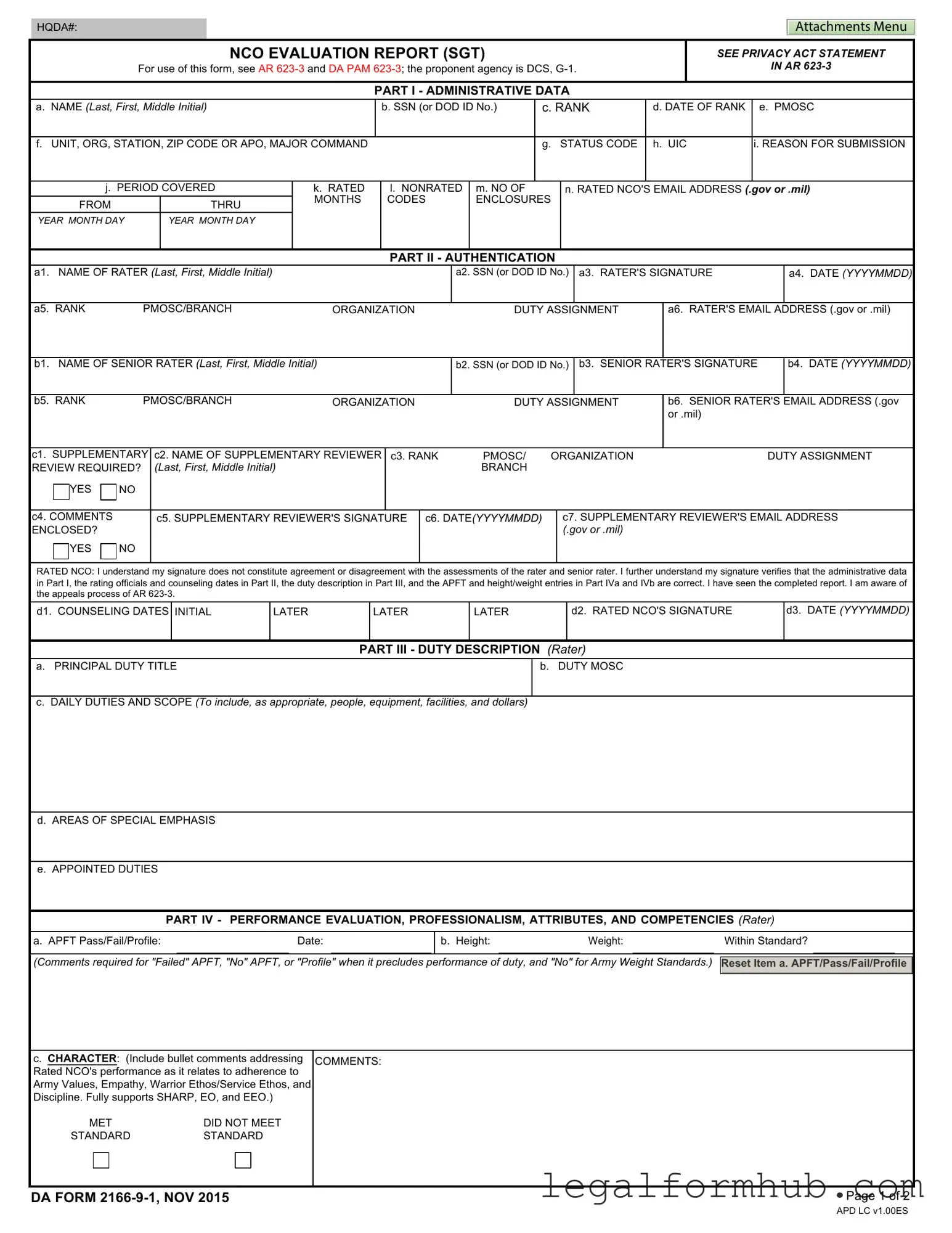The DA Form 2166-9-1 is similar to the DA Form 2166-9, which is an NCO Evaluation Report for higher ranks. Both forms serve the purpose of evaluating the performance and potential of Non-Commissioned Officers (NCOs). While the 2166-9 is used for more senior NCOs, it shares the same structure in terms of administrative data, performance evaluation sections, and authentication requirements. Each form is designed to ensure a consistent evaluation process across different ranks within the Army, maintaining a standard for assessing leadership qualities and competencies.
Another document akin to the DA Form 2166-9-1 is the DA Form 4856, known as the Developmental Counseling Form. This form is utilized for providing feedback and guidance to soldiers, focusing on their performance and areas for improvement. Both forms emphasize the importance of documented assessments, but the 4856 is more oriented toward ongoing development rather than formal evaluations. Each document requires signatures from both the evaluator and the individual being evaluated, reinforcing accountability in the feedback process.
The DA Form 67-9 is also comparable, as it is used for Officer Evaluation Reports. Like the 2166-9-1, the 67-9 assesses performance and potential but is tailored for officers rather than NCOs. Both forms include similar sections for administrative data, performance evaluations, and overall potential assessments. The structure and intent behind these forms align closely, ensuring that evaluations are thorough and standardized across different ranks and roles within the Army.
Similarly, the DA Form 1059 serves as a School Academic Evaluation Report, which assesses a soldier's performance during training courses. This form shares the evaluative nature of the DA Form 2166-9-1, focusing on the individual's achievements and competencies within a specific educational context. While the 1059 is more specialized, both documents aim to provide a comprehensive view of a soldier’s capabilities and readiness for future responsibilities.
The DA Form 20, known as the Soldier's Qualification Record, is another related document. It provides a summary of a soldier's career, including assignments, training, and performance evaluations. While the 20 is more of a historical record, it complements the DA Form 2166-9-1 by offering context to the evaluations. Both forms play a role in the overall assessment of a soldier’s qualifications and career progression, highlighting the importance of documented achievements and evaluations.
In the context of maintaining mental well-being, the role of proper documentation cannot be understated, much like the precision required in military forms such as the DA Form 2166-9-1. Just as these forms document vital evaluations, securing an emotional support animal could significantly enhance one’s quality of life. To begin the process of obtaining the necessary certification, you can start by visiting Fill PDF Forms for assistance in filling out the required forms effectively.
Lastly, the DA Form 2-1, which is the Personnel Qualification Record, is similar in that it contains vital information about a soldier's career, including assignments and training. While the 2-1 is more focused on the soldier's entire career history, it supports the evaluation process by providing background information that may influence performance assessments. Both forms are integral to maintaining an accurate and comprehensive view of a soldier's capabilities and potential for advancement.
